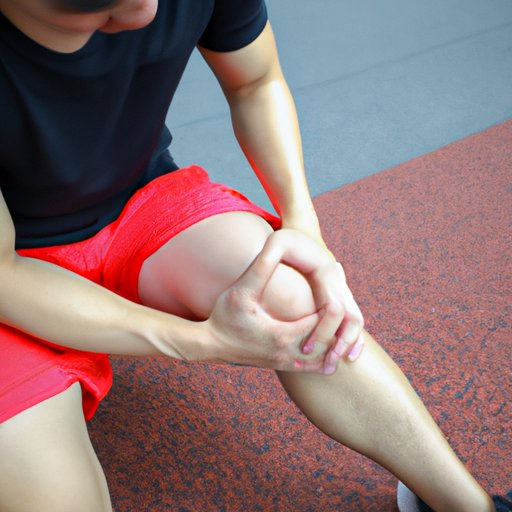Introduction
Have you ever woken up the day after a tough workout only to find it difficult to move? Have you experienced muscle pain, stiffness, or tenderness in your body, making it difficult to function normally? If so, you’re not alone. Most fitness enthusiasts have experienced post-workout soreness at some point in their lives, but few understand what causes it and how to manage it effectively. In this article, we’ll explore the science behind post-workout soreness and provide you with practical tips for preventing and managing muscle pain after exercise.
Understanding the Science Behind Post-Workout Soreness: A Guide for Fitness Enthusiasts
During exercise, your muscles experience microscopic damage that can result in inflammation, pain, and stiffness. This damage is a normal and necessary part of the muscle-building process, but it can also lead to post-workout soreness. Delayed onset muscle soreness (DOMS) is the most common form of post-workout soreness, which typically develops 24-48 hours after a workout.
Factors that can influence the intensity and duration of soreness include exercise intensity, duration, frequency, and type; age; fitness level; hydration; sleep quality; and nutrition. Soreness can also be a sign of injury or overtraining, so it’s important to listen to your body and adjust your workouts as needed.
Preventing Pain: How to Minimize Muscle Soreness After Your Next Workout
Although some degree of soreness is normal and expected after exercise, there are several practical tips you can follow to reduce muscle pain. Start with a good warm-up to prepare your muscles for the workout ahead. Incorporate stretching into your routine to increase flexibility and range of motion. Consider foam rolling after your workout to help alleviate muscle tension.
Proper nutrition is also essential for preventing post-workout soreness. Make sure you’re consuming enough protein to support muscle growth and repair. Stay hydrated by drinking plenty of water before, during, and after exercise. If you’re struggling with muscle soreness, try adding some low-impact exercises, such as yoga or swimming, to your routine.
The Benefits of Being Sore: Why Muscle Pain is a Sign of Progress
While it may be tempting to avoid exercise-induced soreness altogether, muscle pain can actually be a sign of progress. Soreness is a natural part of the body’s adaptation to exercise, and it reflects the rebuilding of muscle tissue after a workout. Tracking soreness can also help you measure progress towards your fitness goals by indicating improvements in strength, endurance, or flexibility. However, soreness should not be the only measure of success, and it’s important to prioritize rest and recovery as well.
What To Do When You’re Too Sore To Workout: Strategies For Managing Post-Exercise Pain
If your muscle soreness is particularly intense or long-lasting, it may be difficult to continue your regular workout routine. In this case, active recovery may be the best approach. Incorporate low-impact exercises or stretching into your routine to promote blood flow and reduce inflammation. Consider getting a massage or trying techniques like acupuncture or cupping to promote healing and relaxation.
It’s also important to give your body time to rest and recover. Take a break from intense workouts and focus on low-impact activities like walking or yoga. Proper rest and recovery can help prevent injury and improve overall performance. If your muscle soreness persists or worsens over time, seek professional help to rule out any underlying conditions.
Why Soreness Matters Less Than You Think: Reframing the Way We Think About Post-Workout Pain
While soreness can be a useful tool in measuring fitness progress, it’s important to remember that everyone’s body is different. Rather than pushing yourself to the limit in pursuit of soreness, try focusing on proper technique, form, and body awareness. Experiment with different approaches to fitness and find what works best for your body and lifestyle.
In addition, prioritize your overall health and well-being over pushing yourself to the limit. Take time to rest and recover, and keep in mind that longevity, injury prevention, and overall well-being should be your top priorities.
Conclusion
Post-workout soreness can be a frustrating and painful experience, but it’s a natural part of the muscle-building process. By understanding the biological mechanisms behind muscle soreness, you can better manage post-workout pain and prevent injury. Incorporate stretching, foam rolling, and proper nutrition into your routine to reduce muscle soreness. Remember that soreness is not the only measure of fitness success, and prioritize rest and recovery for overall well-being. By taking a proactive approach to managing post-workout soreness, you can optimize your fitness routine without sacrificing your health.
